In the world of computer science and programming, two fundamental concepts play a crucial role in the development of software: algorithms and logic. While the terms may appear similar, they represent distinct concepts that are essential to comprehend in order to become proficient in programming. In this article, we will explore the differences between algorithms and logic, providing clear definitions along with illustrative examples.
What is an Algorithm?
An algorithm is a step-by-step procedure or a set of instructions designed to solve a specific problem or accomplish a particular task. It is a well-defined sequence of actions that, when followed, guarantees the solution to the problem at hand. Algorithms can be thought of as a recipe or a blueprint that guides the computer or programmer to achieve the desired outcome. They are often implemented in various programming languages and form the foundation of computer programs.
For example, let’s consider a simple algorithm for finding the maximum number among three given integers:
- Start
- Input three integers: a, b, c
- If a is greater than b and a is greater than c, then output a as the maximum
- If b is greater than a and b is greater than c, then output b as the maximum
- If c is greater than a and c is greater than b, then output c as the maximum
- End
This algorithm provides a clear set of steps to determine the maximum number among three integers. By following these steps, the desired outcome can be achieved.
What is Logic?
Logic, on the other hand, refers to the reasoning or decision-making process employed within an algorithm or program. It deals with the logical relationships and rules that govern the flow of information and the execution of instructions. In programming, logic is implemented using conditional statements, loops, and other control structures to control the flow of execution and make decisions based on specific conditions.
Logic allows programmers to incorporate decision-making capabilities into their algorithms, enabling the program to adapt and respond to different scenarios. It is based on logical operators such as AND, OR, and NOT, which evaluate conditions and produce true or false results.
To further clarify the concept of logic, let’s consider an example of a simple program that determines whether a given number is even or odd:
- Start
- Input a number: n
- If n modulo 2 is equal to 0, then output “Number is even”
- Else, output “Number is odd”
- End
In this program, the logic is implemented through the conditional statement “if.” The modulo operator (%) is used to calculate the remainder when the number is divided by 2. If the remainder is 0, the program concludes that the number is even; otherwise, it determines that the number is odd.
Distinguishing Between Algorithm and Logic :
Having examined the definitions and examples of algorithms and logic, we can now draw a clear distinction between the two concepts:
- An algorithm is a step-by-step set of instructions or a procedure to solve a problem or accomplish a task.
- Logic is the reasoning or decision-making process employed within an algorithm, allowing for the flow of information and the execution of instructions based on specific conditions.
In simpler terms, an algorithm can be considered as the overall plan or strategy, while logic represents the individual decision-making steps within that plan.
Algorithms and logic are fundamental concepts in computer science and programming. Algorithms provide the structure and sequence of instructions to solve problems, while logic enables decision-making and control flow within those algorithms. By understanding the difference between algorithms and logic, programmers can develop efficient and effective solutions to various computational problems, contributing to the advancement of technology and software development.
Types of Algorithms :
There are various types of algorithms, each designed to solve specific types of problems or perform specific tasks. Here are some commonly recognized types of algorithms:
- Sorting Algorithms: These algorithms arrange a collection of items or elements in a specific order, such as ascending or descending. Examples include Bubble Sort, Insertion Sort, Quick Sort, and Merge Sort.
- Searching Algorithms: These algorithms aim to find a specific item or element within a collection of items. Common searching algorithms include Linear Search, Binary Search, and Hashing.
- Graph Algorithms: Graph algorithms deal with operations on graphs, which consist of vertices or nodes connected by edges. Examples of graph algorithms include Depth-First Search (DFS), Breadth-First Search (BFS), Dijkstra’s Algorithm, and Kruskal’s Algorithm.
- Divide and Conquer Algorithms: These algorithms break down a problem into smaller sub-problems, solve them independently, and then combine the results to obtain the final solution. Examples include Binary Search, Merge Sort, and Quick Sort.
- Dynamic Programming Algorithms: Dynamic programming algorithms solve complex problems by breaking them into overlapping sub-problems and solving each sub-problem only once. This approach reduces redundant calculations and improves efficiency. The Knapsack problem and Fibonacci sequence calculation are classic examples of dynamic programming algorithms.
- Greedy Algorithms: Greedy algorithms make locally optimal choices at each step to achieve a global optimum. These algorithms make the best decision at each stage without considering the entire problem. Examples include Dijkstra’s Algorithm, Prim’s Algorithm, and the Fractional Knapsack problem.
- Backtracking Algorithms: Backtracking algorithms explore all possible solutions by incrementally building a solution and backtracking when it determines that a partial solution cannot be completed. The classic example is the N-Queens problem.
- Randomized Algorithms: These algorithms use randomness as part of their execution to achieve a desired outcome. Randomized algorithms are useful in situations where a deterministic algorithm may be impractical or inefficient. Examples include Randomized Quicksort and Monte Carlo algorithms.
- String Matching Algorithms: These algorithms focus on finding occurrences of a specific pattern or string within a larger text or sequence. Notable examples include Naive String Matching, Knuth-Morris-Pratt (KMP) Algorithm, and Rabin-Karp Algorithm.
- Machine Learning Algorithms: These algorithms are designed to learn from data and make predictions or decisions without being explicitly programmed. Examples include Linear Regression, Support Vector Machines, Decision Trees, and Neural Networks.
These are just a few examples of the many types of algorithms that exist in the field of computer science. Each algorithm type serves a unique purpose and is optimized for specific problem domains or computational tasks.
Types of Logic :
In the context of computer science and programming, logic refers to the logical operations and decision-making processes used to control the flow of information and execution of instructions. Here are some common types of logic used in programming:
- Boolean Logic: Boolean logic deals with true and false values, which are represented as binary values of 1 and 0, respectively. It involves logical operators such as AND, OR, and NOT, which operate on Boolean values to evaluate conditions and produce logical outcomes.
- Conditional Logic: Conditional logic allows programmers to specify different actions or behaviors based on specific conditions. It involves the use of conditional statements, such as “if-else” and “switch-case,” which execute different blocks of code based on the truth or falsehood of certain conditions.
- Looping Logic: Looping logic enables the repetition of a set of instructions until a certain condition is met. It helps in executing a block of code repeatedly, saving time and effort. Common loop structures include “for,” “while,” and “do-while” loops.
- Arithmetic Logic: Arithmetic logic involves mathematical operations and comparisons. It includes arithmetic operators such as addition (+), subtraction (-), multiplication (*), division (/), and comparison operators such as equal to (==), greater than (>), less than (<), etc.
- Bitwise Logic: Bitwise logic operates on individual bits of binary numbers. It involves bitwise operators like AND (&), OR (|), XOR (^), complement (~), left shift (<<), and right shift (>>). Bitwise logic is used for tasks such as manipulating flags, encoding data, or performing low-level optimizations.
- Fuzzy Logic: Fuzzy logic is a form of multi-valued logic that deals with degrees of truth rather than just true or false values. It is used in situations where conditions may be ambiguous or have varying degrees of certainty. Fuzzy logic allows for more flexible decision-making based on degrees of membership in different categories.
- Predicate Logic: Predicate logic is a formal system of logic that deals with the relationships between propositions using quantifiers such as “for all” (∀) and “there exists” (∃). It is used in areas like formal verification, theorem proving, and mathematical logic.
- Modal Logic: Modal logic extends classical logic by introducing modalities such as “necessity” and “possibility.” It allows for reasoning about possibilities, beliefs, obligations, and knowledge. Modal logic finds applications in areas like artificial intelligence, philosophy, and computational linguistics.
These are some of the common types of logic used in programming and computer science. Each type serves a specific purpose and provides the necessary tools for decision-making, control flow, and problem-solving within software development.


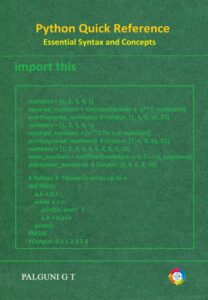
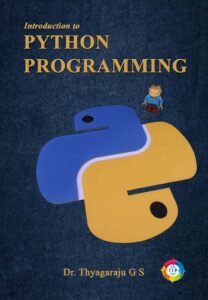
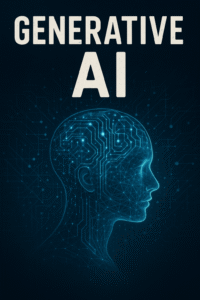

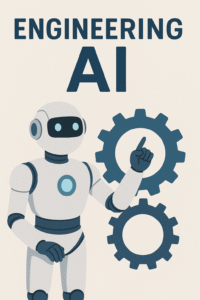
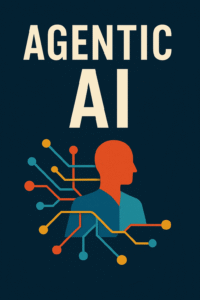



Your point of view caught my eye and was very interesting. Thanks. I have a question for you.
Thanks for sharing. I read many of your blog posts, cool, your blog is very good.
Thanks for sharing. I read many of your blog posts, cool, your blog is very good.
You have mentioned very interesting points!
ps decent website.Raise blog range
Thanks for sharing. I read many of your blog posts, cool, your blog is very good.
Rattling wonderful information can be found on website.Raise blog range
I don’t think the title of your article matches the content lol. Just kidding, mainly because I had some doubts after reading the article.
Thank you for your sharing. I am worried that I lack creative ideas. It is your article that makes me full of hope. Thank you. But, I have a question, can you help me?
I don’t think the title of your article matches the content lol. Just kidding, mainly because I had some doubts after reading the article.
Your article helped me a lot, is there any more related content? Thanks!
Thanks for sharing. I read many of your blog posts, cool, your blog is very good.